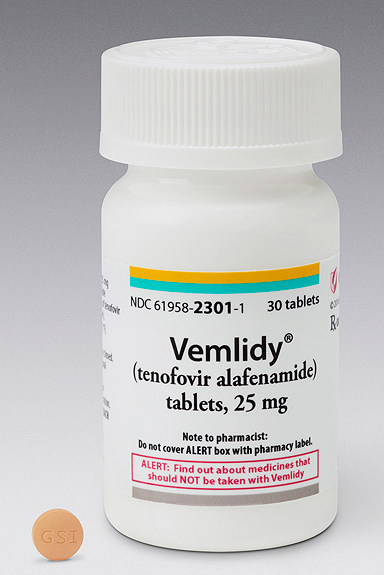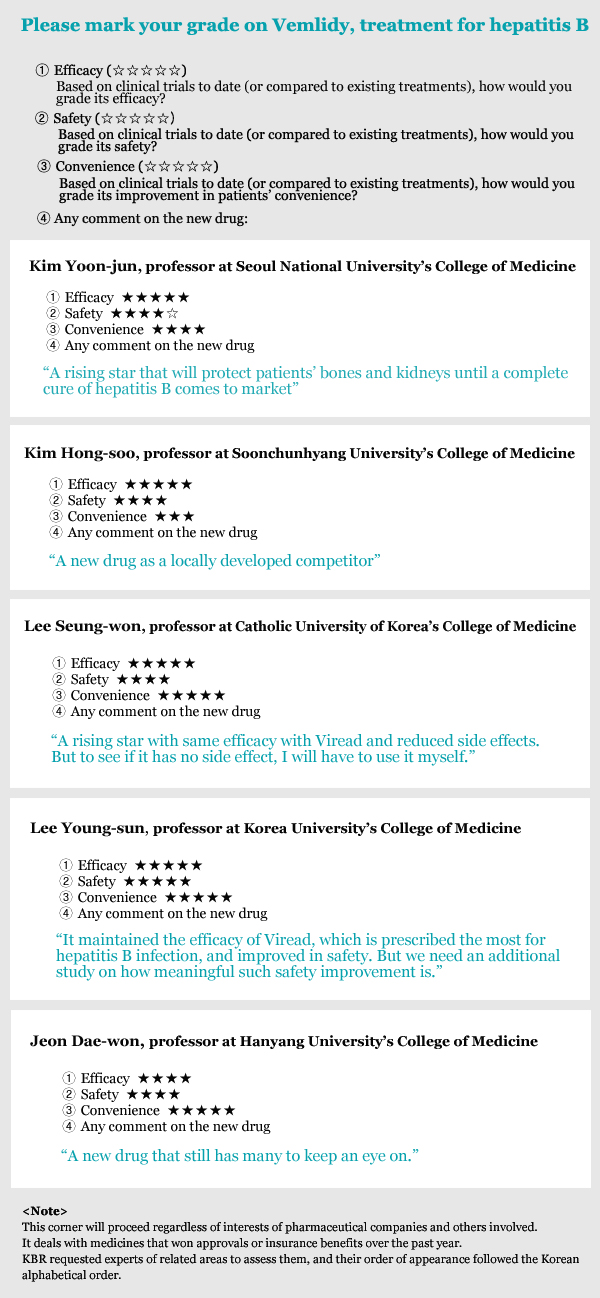[New Drug ①] Hope, concern rise for emerging drug
Korea Biomedical Review will publish “New Drug Series,” a regular series of expert reviews on new drugs that recently won a license or insurance coverage in the Korean market. Of course, no new drug offers no use. Also, it will be inappropriate to prematurely judge on the clinical usefulness of a new drug, as there have been a variety of cases such as the sales ban on Avandia for side effects, the thalidomide tragedy and a rediscovery of immunotherapy agents. There is still a chance for a new drug with low value to be recognized as a high-valued one in the future. Opinions here are provided by experts who judged upon the results of publicly opened clinical trials and documents. – Ed.
What is Vemlidy?

Vemlidy (ingredient: tenofovir ala fenamide, TAF) is a new treatment for chronic hepatitis B infection, developed by Gilead Sciences as an upgrade of Viread (tenofovir disoproxil fumarate, TDF).
Gilead says Vemlidy has similar efficacy with improved safety, compared to Viread, which raised 150 billion won ($132 million) in domestic sales last year.
According to the company, Vemlidy proved non-inferiority to Viread in clinical studies (Study 108, 110), which compared the safety and efficacy of the two drugs on 1,298 hepatitis B patients with or without prior treatment at 220 institutions in 22 countries. In the studies, those who took Vemlidy showed a higher share of showing normal levels of ALT (alanine aminotransferase). Compared to the baseline, Vemlidy-treated patients showed meaningful reductions in their bone mineral density (BMD) of spines and hip joints compared to those treated with Viread. In testing of kidney function and toxicity, those who took Vemlidy showed fewer changes in estimated glomerular filtration rate (eGFRCG) and serum creatinine (sCr).
However, another study -- Tenofovir alafenamide versus tenofovir disoproxil fumarate for the treatment of HBeAg-positive chronic hepatitis B virus infection: a randomized, double-blind, phase 3, non-inferiority trial – released in November 2016 by Lancet, showed that patients treated with Vemlidy showed higher levels of LDL cholesterol (Vemlidy 4 percent, Viread 0 percent) and urine glucose (Vemlidy 5 percent, Viread 1 percent).
Some experts raised concerns about the new drug’s side effects. Others pointed out that Gilead’s launch of Vemlidy, as a follow-up to Viread, was intended to maintain its local market share in preparation to compete with generics in November, following Viread’s patent expiration.
Korea Biomedical Review gathered reviews on Vemlidy from professors at major university hospitals’ internal medicine departments.


